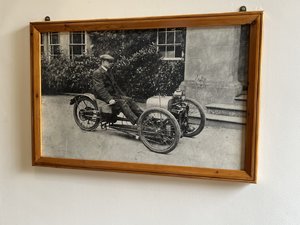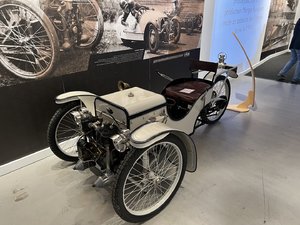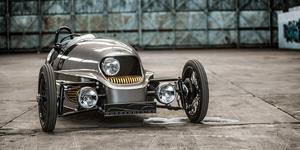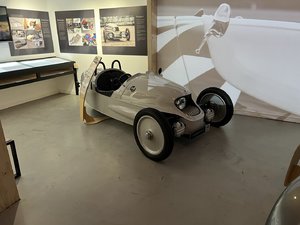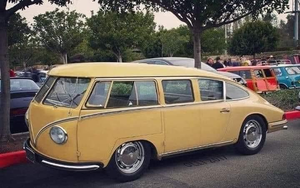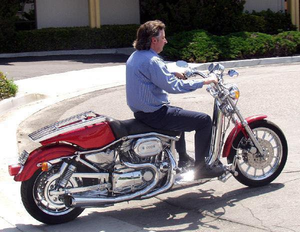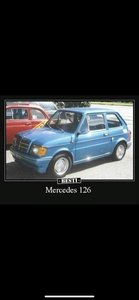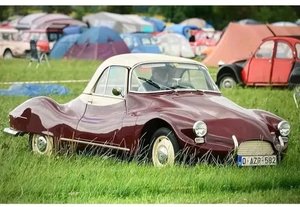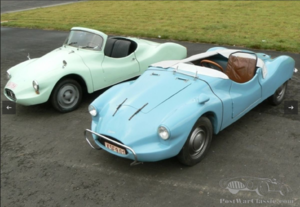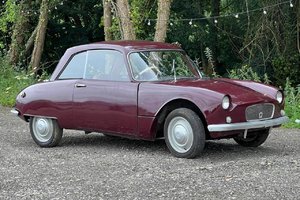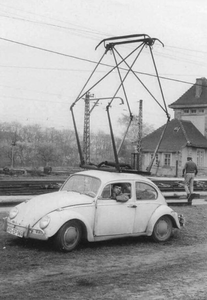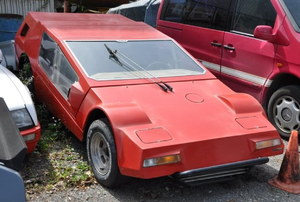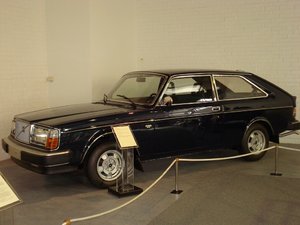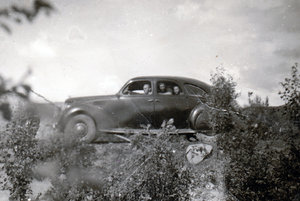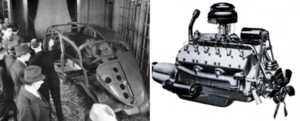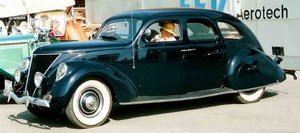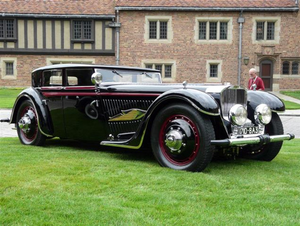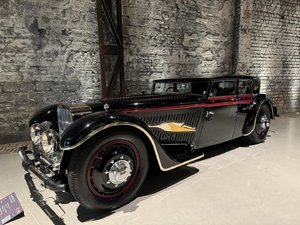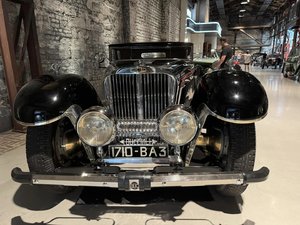Bil, båt og motorsykkel Merkelige biler
- Trådstarter Vintage Silver Pioneer
- Startdato
Diskusjonstråd Se tråd i gallerivisning
-
Manglet bare P-skilt/Agder-skilt så var det komplett.Rorkulten på styrbord side, ser jeg. Den elektrifiserte nytapningen ble visst utsatt.
Vis vedlegget 1038325
Biler med regnummer derfra lager kø, kun rorkult de klarer å håndtere.
Mvh.
SALTTT.
Gjest
For oss som ikke har svart belte i biler, hadde det vært på sin plass å i hverfall skrevet om hvilken bil som det er bilde av. Det bør være minstekravet!
- Ble medlem
- 27.04.2019
- Innlegg
- 12.224
- Antall liker
- 30.925
- Sted
- Nordvest på Jæren
- Torget vurderinger
- 8
^ Noen folk burde ikke ha bæretillatelse for sveiseapparat…- Ble medlem
- 02.05.2009
- Innlegg
- 6.717
- Antall liker
- 4.584
Jeg er litt usikker på om den er virkelig eller om det er en sånn datagreie?TTT.
Gjest
Eller bilderedigeringsprogram.^ Noen folk burde ikke ha bæretillatelse for sveiseapparat… Er vel 27l pr mil også
Er vel 27l pr mil også- Ble medlem
- 29.10.2016
- Innlegg
- 10.899
- Antall liker
- 29.247
- Sted
- Hjortshøj, Danmark.
- Torget vurderinger
- 2
Knapp nokk.Er vel 27l pr mil også
Han sier det i video´n..... 2 miles pr. gallon.
Så det blir ca. 1,1828 liter pr. kilometer = knappt 12 liter pr. mil. ........ Nermest billigt
 Dersom jeg hadde vært dekkselger, ville jeg nok lagt denne i drømmebiltråden.
Dersom jeg hadde vært dekkselger, ville jeg nok lagt denne i drømmebiltråden.
TTT.
Gjest
Lowrider

Efter 20 år i Hasselaskogarna – snöslungemonstret startade direkt
Tre rattar, vändbar växellåda, Volvo i fram och Scania i bak. Försvarets gamla snöröjningsmaskin har grävts fram ur Hasselaskogarna efter 20 år. www.svt.se
www.svt.se

Framdelen är Volvo med en D67 motor. Fordonet är fyrhjulsdrivet. På bakdelen sitter en turbomatad Scania DS8 motor som driver snöslungan. Båda motorerna har diesel som drivmedel.
Det sitter tre rattar i hytten som är synkroniserade. Även pedalerna är synkroniserade – trycker man ner en så trycks motsvarande pedal ner vid de andra rattarna.
Växellådan är reverserbar, så oavsett vilket håll man kör slungan har man fem växlar framåt och en växel bakåt.Merkelig PV
- Ble medlem
- 05.05.2005
- Innlegg
- 419
- Antall liker
- 221
- Ble medlem
- 23.03.2006
- Innlegg
- 21.166
- Antall liker
- 11.942
^Interessant design, men jeg hadde nok ikke vist meg offentlig i en slik sak.

Jeg tar heller en 2CV Bijou.
Citroën Bijou - WikipediaSist redigert:- Ble medlem
- 29.10.2016
- Innlegg
- 10.899
- Antall liker
- 29.247
- Sted
- Hjortshøj, Danmark.
- Torget vurderinger
- 2
Hadde ikke hatt noe problem med å bli sett i en sånn.
Spesiellt den blå. Ville nokk ha malt den i gul eller svart, evt begge farger, men fin er den- Ble medlem
- 27.04.2019
- Innlegg
- 12.224
- Antall liker
- 30.925
- Sted
- Nordvest på Jæren
- Torget vurderinger
- 8
- Ble medlem
- 23.03.2006
- Innlegg
- 21.166
- Antall liker
- 11.942
The Beast, sjelden har vel en bil hatt mer passende navn.VW-boble med V8 i front.
Bilen på bildet er en 1936 Lincoln Continental.. 12-syl rekke.....da jeg vokste opp sto den evig parkert i en garasje i nabolaget... En historie om denne bilen er at en gjeng skulle på en bygdefest knappe to mils vei hjemmefra.. de fylte på ei kanne bensin ( 20l)... og kom seg akkkurat ikke hjem igjen...
bildet er nok tatt tidlig 50-tall..
 Sist redigert:
Sist redigert:- Ble medlem
- 23.03.2006
- Innlegg
- 21.166
- Antall liker
- 11.942
V12, ikke rekke 12Bilen på bildet er en 1936 Lincoln Continental.. 12-syl rekke.....da jeg vokste opp sto den evig parkert i en garasje i nabolaget... En historie om denne bilen er at en gjeng skulle på en bygdefest knappe to mils vei hjemmefra.. de fylte på ei kanne bensin ( 20l)... og kom seg akkkurat ikke hjem igjen...
bildet er nok tatt tidlig 50-tall..
Vis vedlegget 1088033Hm... sikker?? Vi ungene i nabolaget pleide leke i den bilen av og til...- Ble medlem
- 29.10.2016
- Innlegg
- 10.899
- Antall liker
- 29.247
- Sted
- Hjortshøj, Danmark.
- Torget vurderinger
- 2
- Ble medlem
- 14.06.2005
- Innlegg
- 198
- Antall liker
- 338
Denne står på museet The Loh Collection i dag.Bucciali TAB 16 Double Huit
16 cyl, 155 HK
Finner ikke riktig bilde (kommer senere), men noe likt denne:
Vis vedlegget 1088123
 Ikke så mange av dem som har overlevd. Det var vel flere grunner til det.
Ikke så mange av dem som har overlevd. Det var vel flere grunner til det.

Lincoln-Zephyr V12 engine - Wikipedia
 en.wikipedia.org
Initial power output was quoted as 110 horsepower -- a little higher than the target figure -- at 3,900 rpm, a rather high power peak for those days. The torque curve was quite flat, however, with at least 180 pounds/feet available from 3,500 rpm all the way down to 400 rpm, which made for incredible top-gear performance. Though the Zephyr V-12 no more resembled previous Lincoln engines than the ubiquitous V-8 (despite sharing the latter's stroke), it was more like a "12-cylinder Ford" than a classic multi-cylinder powerplant in character. And it was not without problems. The main ones were inadequate crankcase ventilation that caused rapid sludge buildup in sustained low-rpm running, aggravated by poor oil flow, plus too-small water passages that led to overheating, bore warpage, and ring wear. To a degree, some of these maladies were dealt with during the Zephyr's first year, and Ford improved the engine by adopting hydraulic valve lifters for 1938 and cast-iron heads and oiling improvements for 1942. Yet this V-12 never shed its reputation for service troubles, though the postwar versions were actually quite reliable.A single month of 1942 production used a 306 cubic inches (5.01 L) version of the engine. This was resurrected after the war in 1946 (with 7.2:1 compressionand 2-barrel twin-choke carburetor, rated at 130 hp (97 kW)[2] for a short time before reverting to 292 cu. in. for the rest of 1946 through 1948. The reason for the reversion to the smaller size was that the cylinder walls on the bored-out engine were found to be too thin. Many disappeared altogether in the block casting process at the factory causing many blocks to be scrapped before installation. Cylinder wear in the field was extreme, and re-boring during engine overhaul was impossible.
en.wikipedia.org
Initial power output was quoted as 110 horsepower -- a little higher than the target figure -- at 3,900 rpm, a rather high power peak for those days. The torque curve was quite flat, however, with at least 180 pounds/feet available from 3,500 rpm all the way down to 400 rpm, which made for incredible top-gear performance. Though the Zephyr V-12 no more resembled previous Lincoln engines than the ubiquitous V-8 (despite sharing the latter's stroke), it was more like a "12-cylinder Ford" than a classic multi-cylinder powerplant in character. And it was not without problems. The main ones were inadequate crankcase ventilation that caused rapid sludge buildup in sustained low-rpm running, aggravated by poor oil flow, plus too-small water passages that led to overheating, bore warpage, and ring wear. To a degree, some of these maladies were dealt with during the Zephyr's first year, and Ford improved the engine by adopting hydraulic valve lifters for 1938 and cast-iron heads and oiling improvements for 1942. Yet this V-12 never shed its reputation for service troubles, though the postwar versions were actually quite reliable.A single month of 1942 production used a 306 cubic inches (5.01 L) version of the engine. This was resurrected after the war in 1946 (with 7.2:1 compressionand 2-barrel twin-choke carburetor, rated at 130 hp (97 kW)[2] for a short time before reverting to 292 cu. in. for the rest of 1946 through 1948. The reason for the reversion to the smaller size was that the cylinder walls on the bored-out engine were found to be too thin. Many disappeared altogether in the block casting process at the factory causing many blocks to be scrapped before installation. Cylinder wear in the field was extreme, and re-boring during engine overhaul was impossible. -
Laster inn…
Diskusjonstråd Se tråd i gallerivisning
-
-
Laster inn…


